Remora®
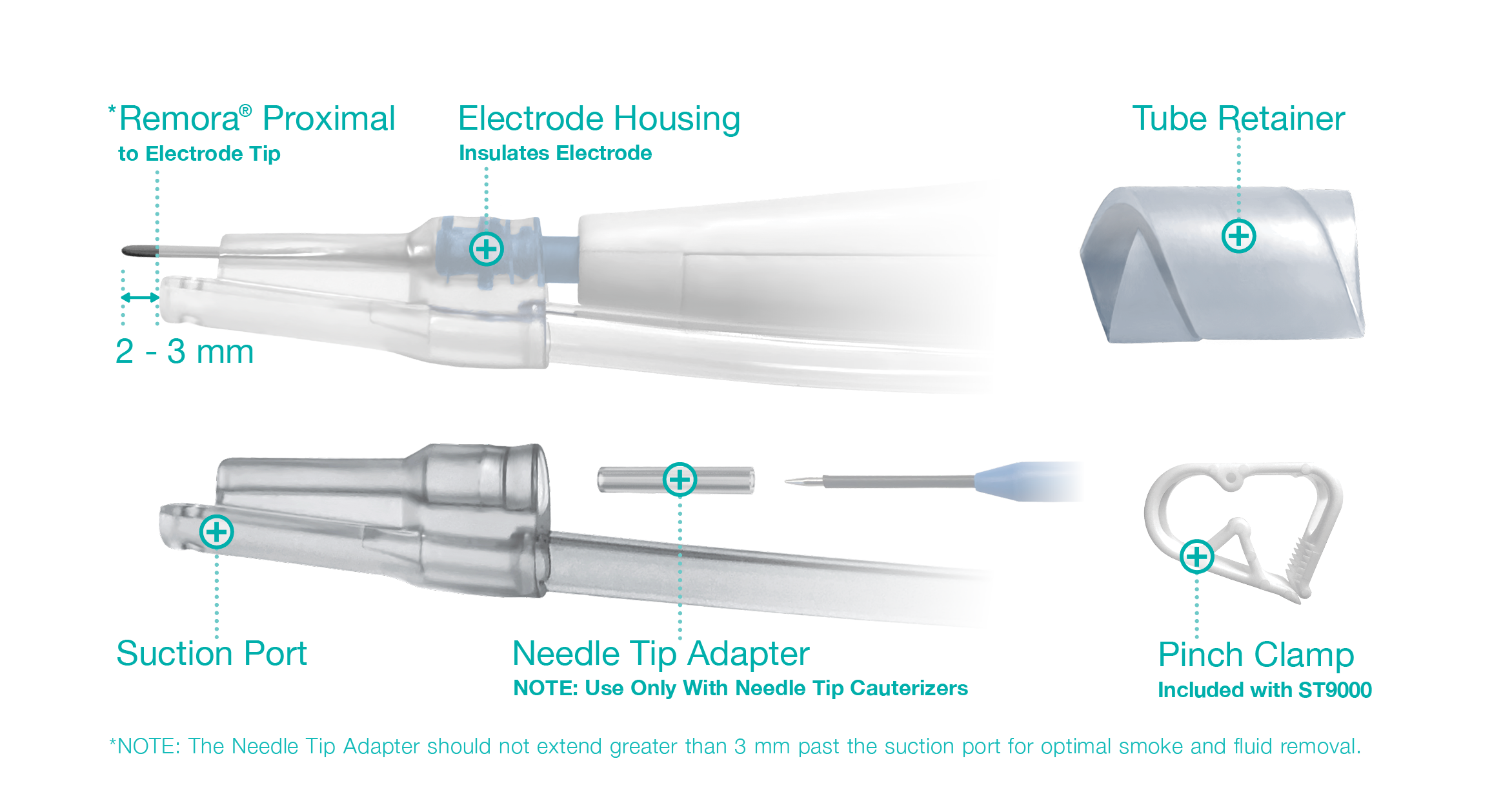
What is the Remora®?
The Remora® is a smoke and fluid evacuation system that was designed to attach to (or work with) almost any electrosurgical pencil and has a universal suction adapter which plugs into most O.R. suction sources.
The Remora® allows the surgeon to simultaneously remove smoke and fluid from the electrosurgical site. With a minimalist form, the Remora® preserves the surgeon’s field of vision and dexterity while operating. Additionally, removing fluid from the surgical site can improve the conductivity of electrosurgical instruments, potentially resulting in a more efficient procedure.
The Remora® comes in a standard and a micro configuration to accommodate a variety of surgical procedures. The Remora® is an excellent tool to increase efficiency and assist in keeping the operating room free of toxic surgical smoke.
What is Electrosurgery and Surgical Smoke?
Electrosurgery refers to the application of high-frequency electrical current to biological tissue as a means to cut and coagulate,1 this helps reduce blood loss and operating time.2
Unfortunately, while performing electrosurgery, a harmful byproduct is produced: Surgical Smoke, also known as a smoke plume. Surgical smoke is generated by the thermal destruction of tissue; it consists of 95% water vapor and 5% combustion by-products and cellular debris.3 Inhaling the smoke plume generated by electrocautery ablation of 1 g of tissue is roughly equivalent to smoking six unfiltered cigarettes.4
What are the risks of Surgical Smoke Exposure?
Each year, 500,000+ healthcare workers are exposed to surgical smoke.5 It is estimated that surgical smoke contains over 750 chemical compounds.6 The impact of inhaling surgical smoke in the O.R. is equivalent to smoking 27-30 unfiltered cigarettes a day.7, 8 Surgical smoke is not sterile and can contain live viruses and bacteria (e.g. HPV9).
The protection provided by standard surgical masks may be inadequate in filtering either smaller smoke particles or larger non-combusted cellular components that are potentially hazardous to healthcare workers.10
Surgical smoke is known to cause health problems.11, 12, 13 If you can smell the surgical smoke through your mask, the toxins and viable pathogens are a potential threat to your patients and staff.14
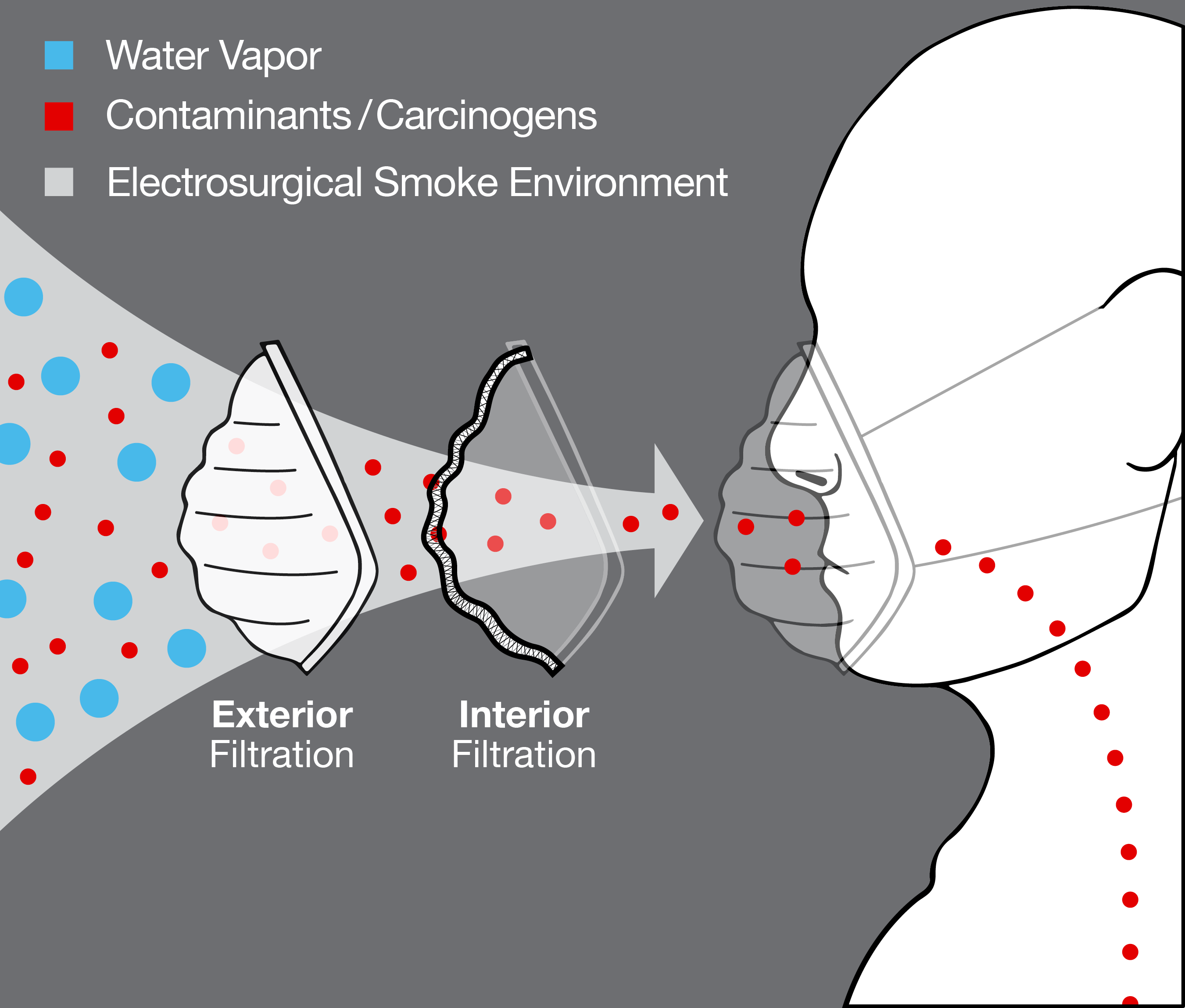
Nearly 150 chemicals belonging to the following chemical classes have been identified in the laser plume: alkanes, alkenes, aldehydes, ketones, alkyl aromatics, pyrrols, furans, pyridines, thioles, thiocyanates, pyrimidines, and nitriles. However, it has been estimated that there are more than 600 compounds yet to be identified in laser surgical smoke.
Pierce J.S., Lacey S.E., Lippert, J.F., et al. Laser-Generated Air Contaminants from Medical Laser Applications: A State-of-the-Science Review of Exposure Characterization, Health Effects, and Control. JOEH. 2011; 8:447-466
The smoke produced by electrosurgical procedures is unavoidable, but your exposure doesn’t have to be.
The Remora® removes smoke and fluids at the source!
Breathe Easy with Remora®
The Remora® allows the surgeon to simultaneously remove smoke and fluid from the electrosurgical site. With a minimalist form, the Remora® preserves the surgeon’s field of vision and control while operating. Additionally, removing fluid from the surgical site can improve conductivity of electrosurgical instruments, which may result in more efficient procedures. The Remora® comes in a variety of sizes to accommodate many different tips (needle, blade, or extended) and electrosurgical pencil handles. The Remora® is an excellent tool to increase efficiency and assist in keeping the operating room free of toxic smoke.
Advantages of the Remora®
How to attach the Remora®?
The Remora® was designed for Universal Compatibility: The Remora® simply slips over almost any electrosurgical pencil and has a universal suction adapter which plugs into most O.R. suction sources. Because of the universal design, there is NO Capital Equipment Investment Required to incorporate the Remora® into your smoke evacuation program.
The low profile design of the Remora® allows for clear visualization of the surgical site, especially in deep surgical pockets or cavities. The Remora® frees surgical staff from surgical smoke evacuation duties, removes unpleasant odors associated with electrosurgery and most importantly, protects the O.R. staff and patients from toxins and viable pathogens found in the electrosurgical smoke plume.
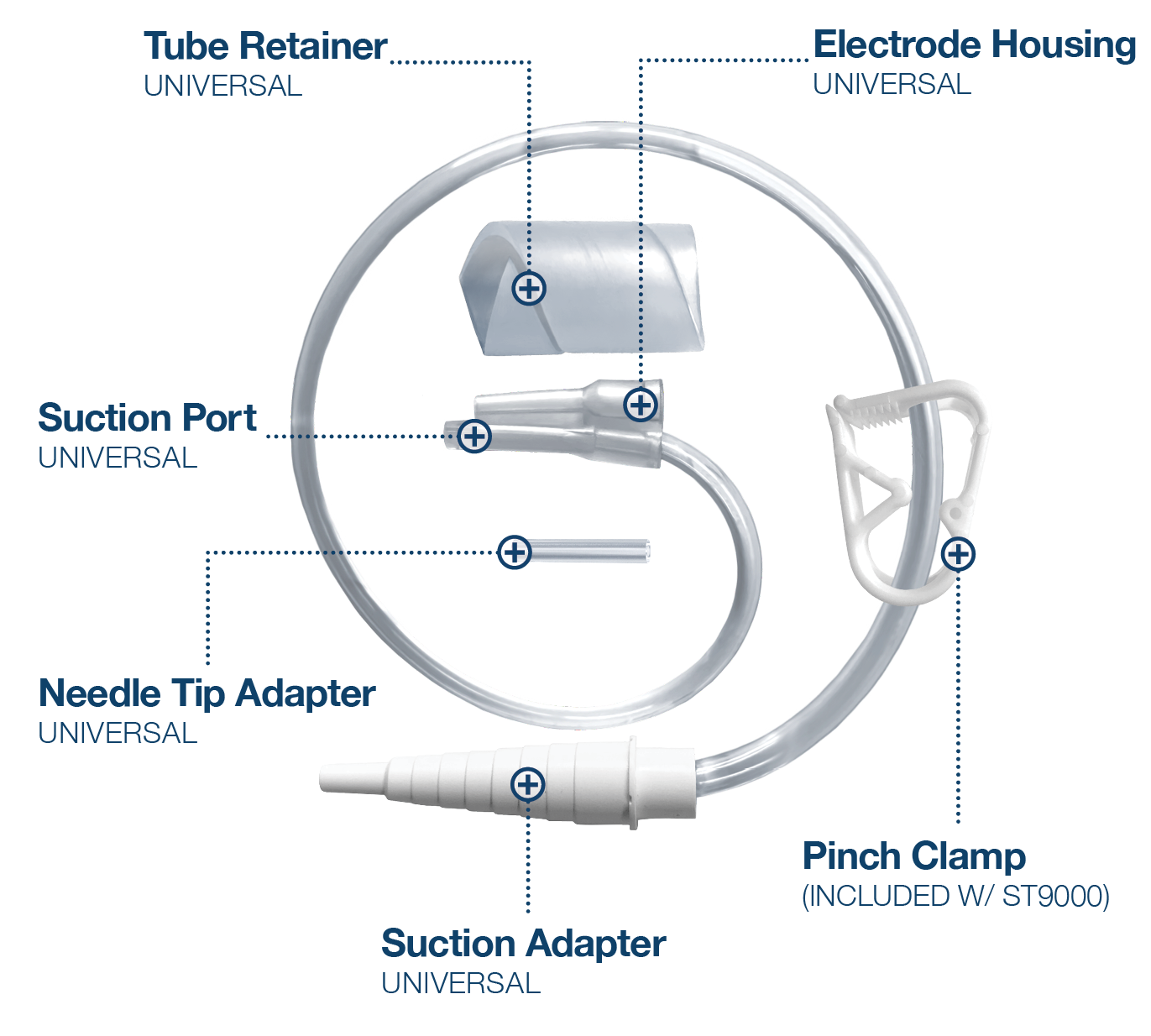

Physician’s Testimonial
I’ve been using the Remora® for about 10 years now and thousands of surgical procedures and it’s worked great consistently, it hooks right onto the Bovie® pen and gets rid of smoke and doesn’t affect the surgical procedure otherwise… One of the nice things about the Remora® was that we didn’t have a large up-front expense, there was no capital equipment purchased.
The Remora® keeps me and my staff away from dangerous surgical smoke and we like it because of that!
— David S. Kirn, M.D., F.A.C.S., Private Practice for 20+ Years
Remora® Evacuators can be used with Blade or Needle Electrodes.
The universal suction adapter connects to most O.R. vacuum sources.
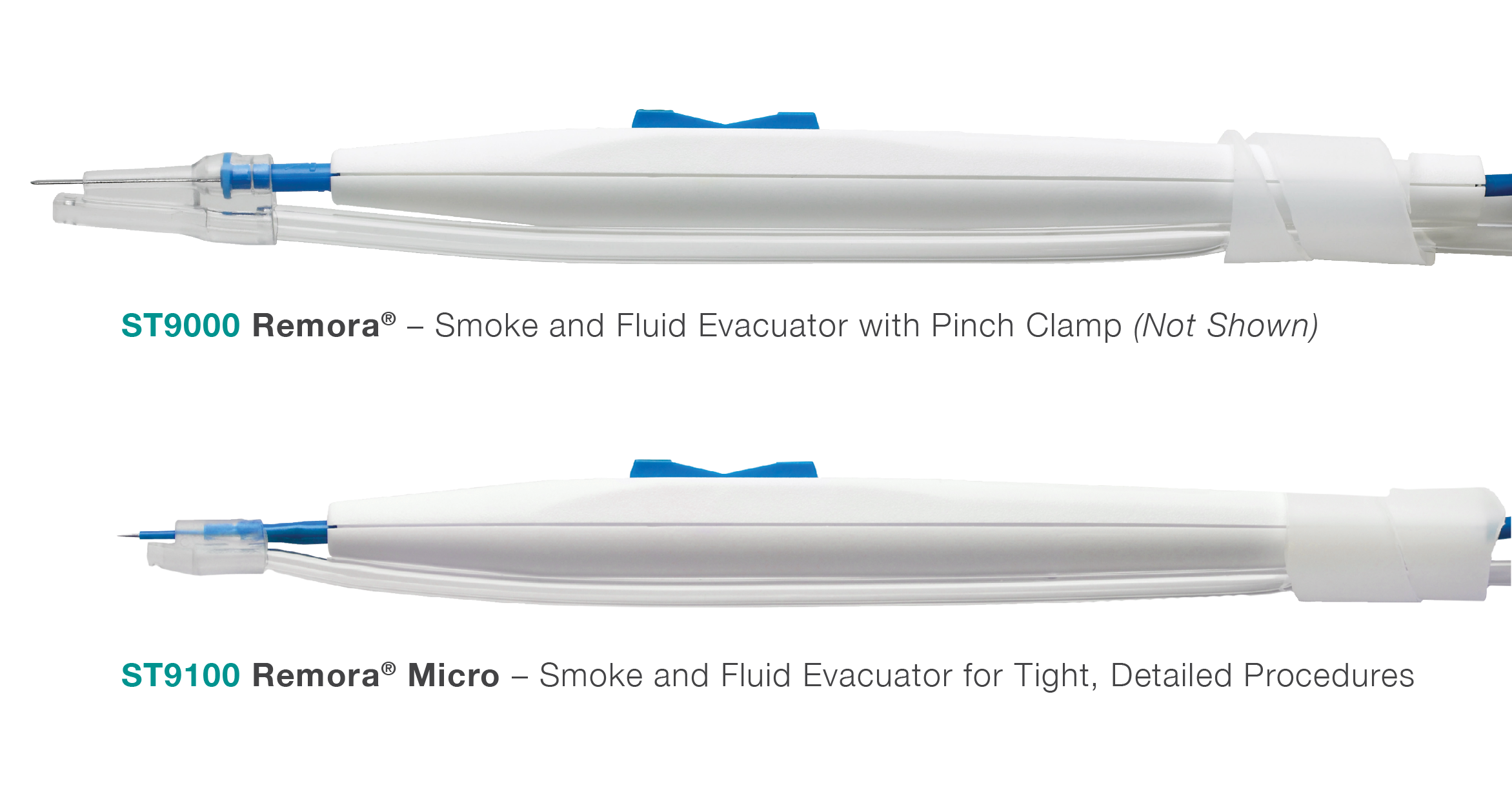
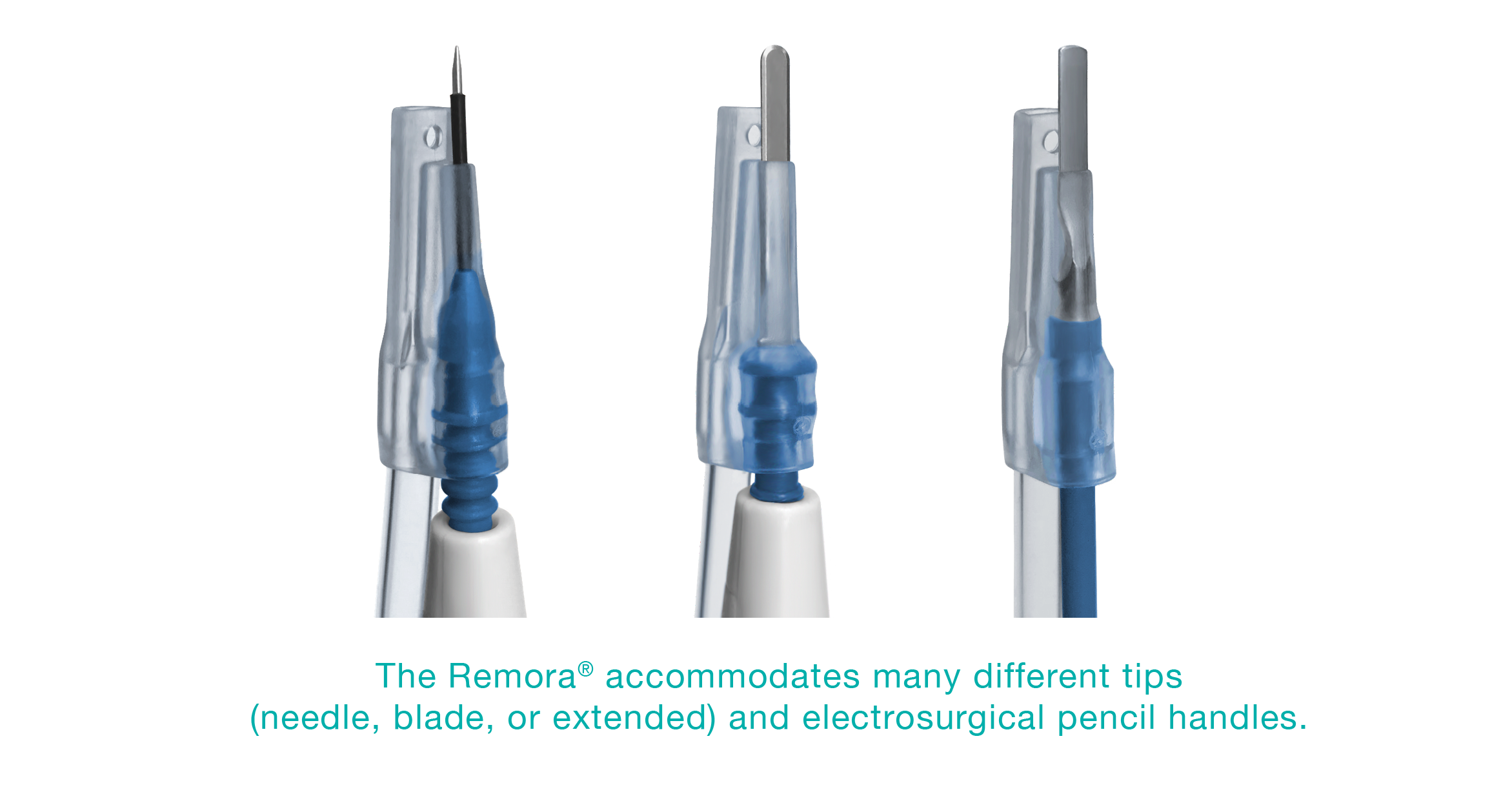
Part Numbers & Ordering Information
The Remora® comes in two sizes, standard and micro, to support a variety of surgical procedures.
Healthcare Professionals can order with established NET 30 terms or Prepayment/Credit Card.
| Order # | Description | Tube Length | Size |
|---|---|---|---|
| ST9000 | Smoke and Fluid Tube Evacuator with Pinch Clamp | Standard | Standard |
| ST9100 | Smoke and Fluid Tube Evacuator for Tight Spaces | Micro | Micro |
The smoke produced by electrosurgical procedures is unavoidable, but your exposure doesn’t have to be.
Breathe Easy with Remora®!
1.Hainer BL, “Fundamentals of electrosurgery”, Journal of the American Board of Family Practice, 4(6):419-26, 1991Nov-Dec.↩
2.Sara Näslund Andréasson, Haile Mahteme, Bo Sahlberg, and Helena Anundi, “Polycyclic Aromatic Hydrocarbons in Electrocautery Smoke during Peritonectomy Procedures,” Journal of Environmental and Public Health, vol. 2012, Article ID 929053, 6 pages, 2012.↩
3. Laser/Electrosurgery Plume. [Online] Available at http://www.osha.gov/SLTC/laserelectrosurgeryplume/ (Accessed November 2018).↩
4. Hill D.S., O’Neill, J.K., Powell, R.J., et al. Surgical smoke—a health hazard in the operating theatre: a study to quantify exposure and a survey of the use of smoke extractor systems in UK plastic surgery units. Journal of Plastic Reconstructive & Aesthetic Surgery. 2012; 65(7):911-916.↩
5. Hill D.S., O’Neill, J.K., Powell, R.J., et al. Surgical smoke—a health hazard in the operating theatre: a study to quantify exposure and a survey of the use of smoke extractor systems in UK plastic surgery units. Journal of Plastic Reconstructive & Aesthetic Surgery. 2012; 65(7):911-916.↩
6. Pierce J.S., Lacey S.E., Lippert, J.F., et al. Laser-Generated Air Contaminants from Medical Laser Applications: A State-of-the-Science Review of Exposure Characterization, Health Effects, and Control. Journal of Occupational and Environmental Hygiene. 2011; 8:447-466.↩
7. Tomita, Y., Mihashi, S., Nagata, K., et al. Mutagenicity of smoke condensates induced by CO2-laser irradiation and electrocauterization. Mutation research 89 2 (1981):145-149.↩
8. Hill D.S., O’Neill, J.K., Powell, R.J., et al. Surgical smoke—a health hazard in the operating theatre: a study to quantify exposure and a survey of the use of smoke extractor systems in UK plastic surgery units. Journal of Plastic Reconstructive & Aesthetic Surgery. 2012; 65(7):911-916.↩
9. Hallmo P, Naess O. Laryngeal papillomatosis with papilloma virus DNA contracted by a laser surgeon. European Archives of Otorhinolaryngol 1991; 248:425-427.↩
10. Weber A, Willeke K, Marchioni R. Aeerosol penetration and leakage characteristics of masks used in the health care industy. Am J Infect Contr 1993;21:167-73.↩
11. Gatti J.E., Bryant, C.J., Noone, R.B., et al., The Mutagenicity of Electrocautery smoke. Plastic & Resonstructive Surgery 1992; 89:871.↩
12. Spearman J, Tsavellas G, Nichols P., Current Attitudes and Practices towards Diathermy Smoke. Annals of the Royal College of Surgeons of England 2007; 89:162-165.< a title=”Jumpe back to food note 12 in the text.” href=”ref12″>↩
13. Hallmo P, Naess O. Laryngeal papillomatosis with papilloma virus DNA contracted by a laser surgeon. European Archives of Otorhinolaryngol 1991; 248:425-427.↩
14. Weber A, Willeke K, Marchioni R. Aeerosol penetration and leakage characteristics of masks used in the health care industy. Am J Infect Contr 1993;21:167-73.↩
Bovie® is a registered trademark of Specialty Surgical Instrumentation, Inc. or its affiliates.
